craft post by Anne-Marie Strohman
This fall, I’ve been piloting a class on writing middle grade novels. We’ve spent some time looking at scene construction. In studying scene endings, I told the class that one option is to “put a button on it.” One participant asked what that meant. I realized I didn’t actually know, at least not well enough to define it clearly.
It turns out, it’s an acting term, and I’ve likely been hearing it on the screenwriting podcast I listen to.
And it’s also a great tool for writers to use! Let’s define the term, look at some examples, and examine why buttons can be the perfect scene ending.
What does “put a button on it” mean?
According to Acting Magazine, a “button” is something that happens at the end of a scene that provides closure, a final touch that seals the deal. It can also be called a “tag” and is a final beat that can be used to close out the scene.
The examples in the article focus on an actor’s facial expression or reaction, whether in a commercial or a scene or an audition, that gives a final moment of humor or connection that may be outside what’s on the page of the script. (Screenwriters will often include “buttons” written into the script, too.)
Examples of “putting a button on it”: Novels
Bridge to Terabithia by Katherine Paterson
In Bridge to Terabithia, Katherine Paterson uses a button at the end of the scene where Jess Aarons, our protagonist, first meets Leslie Burke, the other central character in the story.
. . . He nodded at her. “See you.” He turned toward the house. No use trying to run any more this morning. Might as well milk Miss Bessie and get that out of the way.
“Hey!” Leslie was standing in the middle of the cow field, her head tilted and her hands on her hips. “Where you going?”
“I got work to do,” he called back over his shoulder. When he came out later with the pail and stool, she was gone.
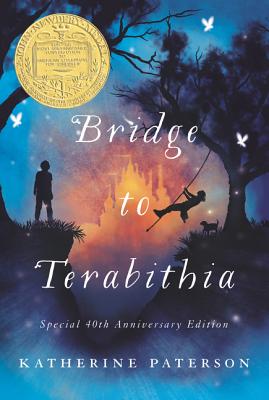
The scene ends when Jess calls back over his shoulder as he leaves the field. But Paterson adds a tag that includes later events. The final sentence reveals Jess’s interest in Leslie–that he was looking for her when he came back out.
This button helps keep our focus on Leslie and sets us up for the friendship that develops between Jess and Leslie. It also give a sense of finality to the scene.
Pay Attention, Carter Jones by Gary D. Schmidt
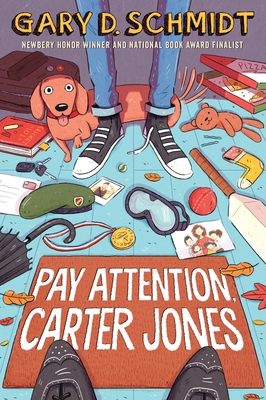
Gary D. Schmidt is a master of scene-ending buttons. In Pay Attention, Carter Jones, Schmidt uses a button for the purpose of what I’ve termed an “emotional OOF.” Let’s take a look at the scene, and I’ll explain what I mean.
Carter has been dealing with a lot of hard things at home, and he’s struggling with grief.
The scene focuses on the first practice the new eighth-grade cricket team holds on the football field. One of the boys, Chall, brags that he would be a great batsman, and the coach allows him to try. Chall is not very successful. He gets hit in the stomach with one ball, and then another.
And as the rest of the eighth-grade varsity cricket team rushed toward Michael Chall, and then stepped back when he started to gag, and then rushed away when he threw up what had probably been a pretty big breakfast, I thought, That’s how I feel all the time now. Like a couple of cricket balls have smashed into my stomach.
Except after a while, Chall was better.
Carter uses a great analogy to communicate how he feels. Then adds a button that nails down the scene. Chall recovers, but Carter keeps feeling this way. It emphasizes how Carter’s grief is lasting and unavoidable.
Examples of “putting a button on it”: Picture Books
A prime place for a button is the last page turn of a picture book. Authors can add one more line or image that adds a bit of a twist and puts a button on the book as a whole.
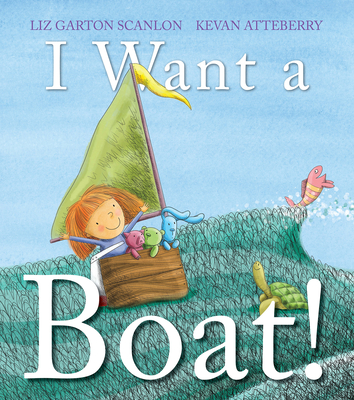
I Want a Boat by Liz Garton Scanlon and Kevan Atteberry
Take for instance, I Want a Boat by Liz Garton Scanlon and Kevan Atteberry. The book starts:
I have a box. I want a boat
I have a boat. I want a rudder.
The character has an imaginative adventure, then ends the day with supper.
I have my supper. I want to sleep.
I’ve gone to sleep. I want to dream.
It’s a lovely ending, right? But turn the page, and the last line reads:
I have a . . . box.
The image is of the character dreaming all sorts of things the box could be–a rocket, a truck, a robot. We know that the possibilities for tomorrow and the day after and the day after are endless.
Priscilla Gorilla by Barbara Bottner and Michael Emberley
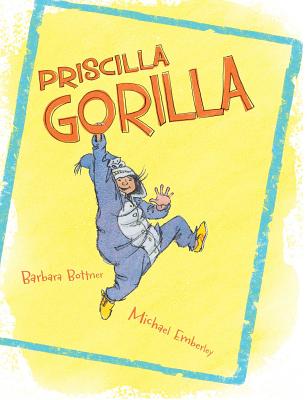
One of my favorite picture books of all time is Priscilla Gorilla by Barbara Bottner and Michael Emberley. Six-year-old Priscilla is a gorilla fanatic in a way that interrupts her classroom, so much so that “Mr. Todd invited me to the Thinking Corner,” as she tells her mom. Things escalate from there.
At the end Priscilla’s gorilla knowledge comes in handy on a class visit to the zoo, and she gets her class to do the gorilla dance:
Sam started doing his own gorilla dance. So did Lily, then Miranda, then Walter and Zoe.
Then, everyone!
Turn the page, and Bottner and Emberley have added a button on the last spread:
Even Mr. Todd!
We see Mr. Todd dancing around and around with Priscilla there too. The teacher who has been her antagonist is now in on the fun.
The final page has another button: an image of Priscilla in her gorilla costume on the bus eating a banana. It’s just a bit of spot art, but this image confirms that Priscilla hasn’t at all left behind her love of gorillas–she is a persistent character–though she has grown in other ways.
Why use buttons at the ends of scenes and chapters?
Buttons create a satisfying ending that takes the scene just that one more notch. It can add a twist, focus our attention on a particular character or goal or theme, or emphasize an emotion.
Balance your button use
But not every scene needs a button. In fact, I’d recommend not using a button on every scene. Buttons can get old if used incessantly, so be judicious. If you do have many scenes in a row with buttons, consider varying the purpose of the button.
Now it’s YOUR turn!
- Analyze a favorite book, or one that’s similar to the style you’re writing. Identify scenes with buttons and examine the purpose of each button. Add those possibilities to your writer’s toolbox.
If you’re working on a novel:
- Pick a scene from your work in progress. Try adding a button, if you don’t have one already. Then, try three or four more that serve different functions. Choose the most effective one.
- Try this with more scenes.
- Track scene buttons. Make a list of scenes in your novel and note whether there’s a button and, if so, what function it serves. Then see if you can vary, add, or delete buttons to improve your scene endings.
If you’re working on a picture book:
- Analyze a number of picture books for ending buttons.
- Try out four to five different button endings for your picture book.
- Choose the most effective one. (Or decide it works better without one.)
Find all the amazing authors and illustrators on social media:
Katherine Paterson
Liz Garton Scanlon
Kevan Atteberry
Michael Emberly
Check out these KidLit Craft articles on endings:
Anne-Marie Strohman (co-editor) writes picture books, middle grade novels, and young adult short stories and novels. She is trained as a teacher, an editor, and a scholar, specializing in Renaissance Literature. She holds an MFA in Writing for Children and Young Adults from Vermont College of Fine Arts and is an active member of SCBWI. Find her at amstrohman.com and on Twitter @amstrwriter.
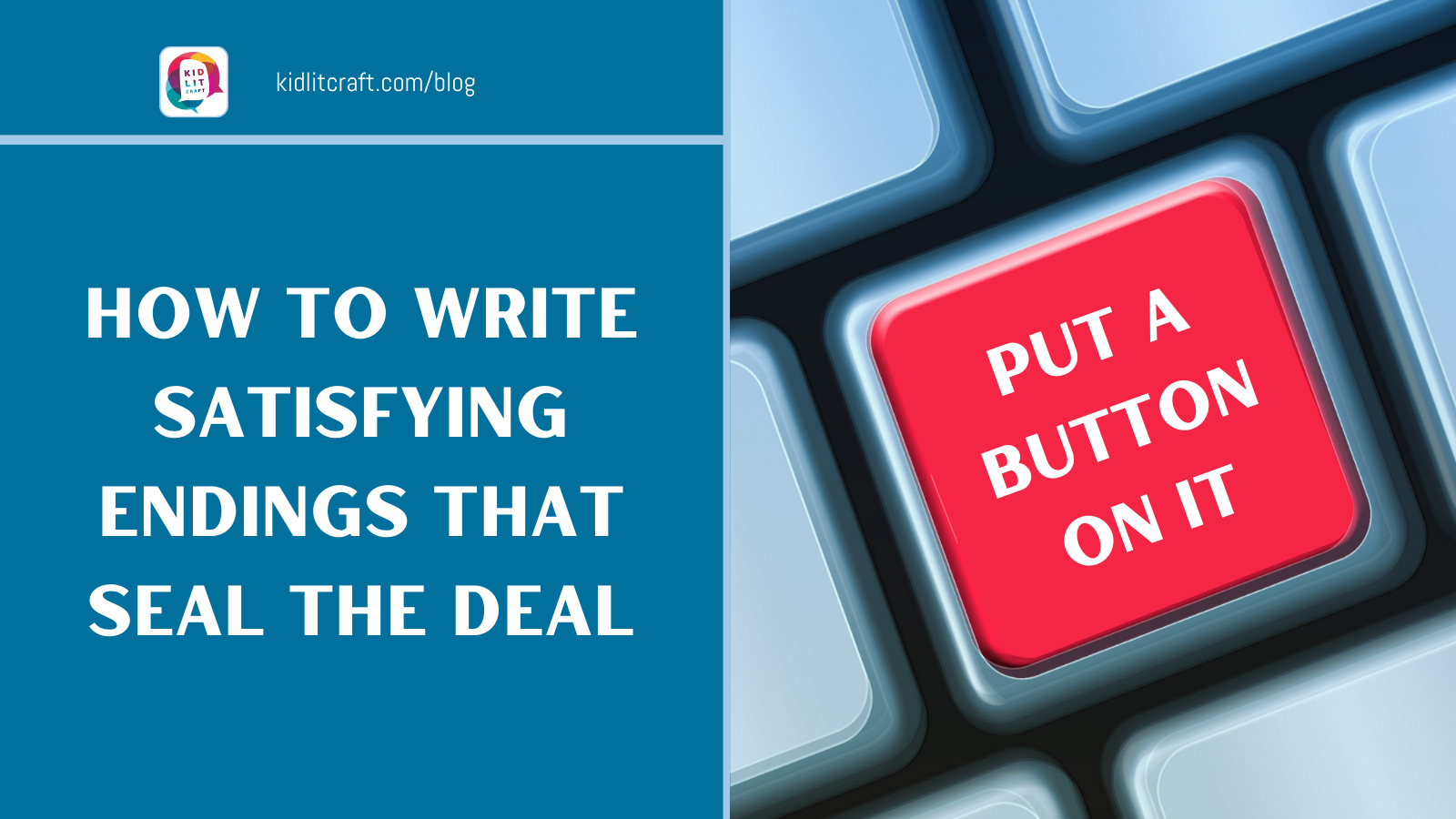
COMMENTs:
0